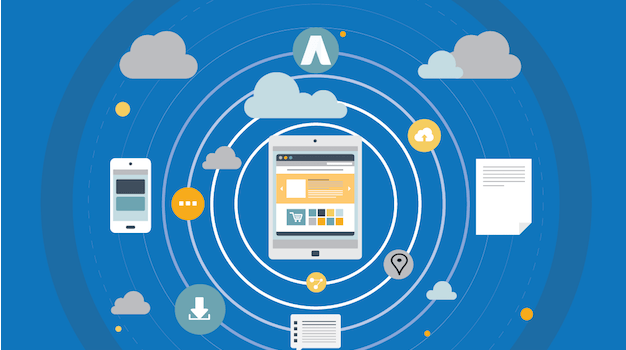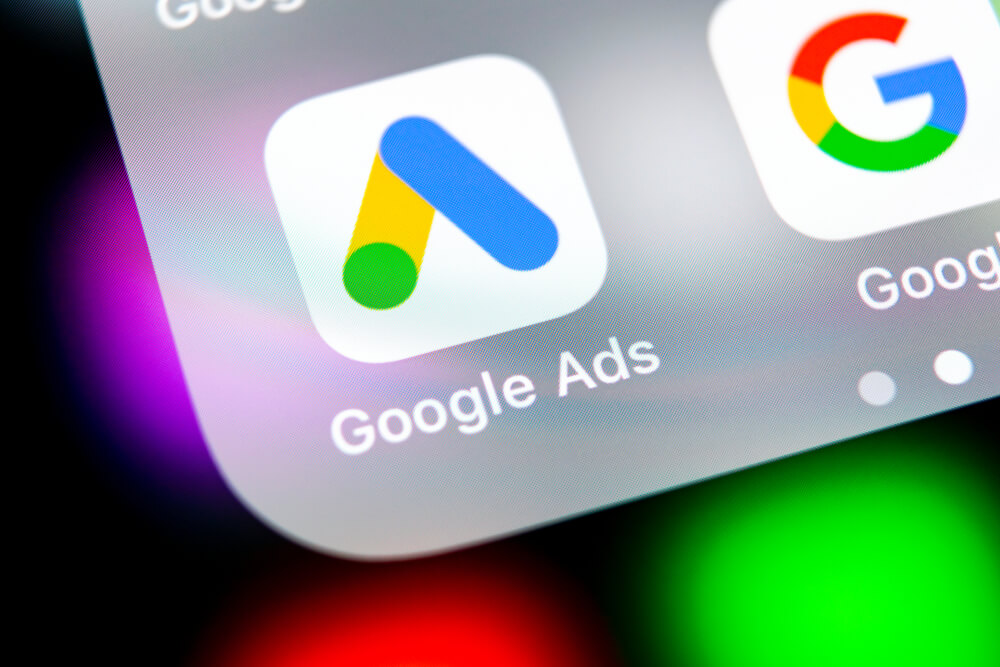Google Ads reigns supreme?
Asking our team “Should I use Google Ads?” is like asking us if you should order dessert. The answer is yes. There’s a separate compartment in your stomach for sweets.
Jokes aside, Google Ads affords too many benefits to businesses—whether they are large or small, local or ecommerce, in the healthcare industry or home improvement space—to be ignored.
Assess Your Marketing Budget, Time Constraints, and Product Offering
One of the biggest hurdles that most businesses need to cross when signing up with Google Ads and running a campaign is budget.
Can I afford this? Will my money be wasted?
It all goes back to loss aversion theory : “people’s tendency to prefer avoiding losses to acquiring equivalent gains.”
Simply put, we’d rather keep our money than risking it for an equivalent return.
But Google Ads can provide some powerful results, and (on average) you can expect to double your returns
Assess your Marketing Budget:
A great way to conduct research is to start analyzing the average cost per clicks in your industry and benchmarking that cost with conversion rates.
This will help you to calculate how much you likely will have to spend in a given month and what returns you can expect to generate.
This simple cost-benefit analysis can paint a clear picture of baseline success with the potential for much more.
Write that number down and now look at your own historical conversion rates. If you have no data to go off, simply use a scenario analysis. In other words, if your industry average is ~2%, use 1% and 3% ranges to give you a pessimistic, expected, and optimistic outlook.
Here’s how that looks if we use the following variables:
- CPC: $1.38
- CVR: 2.77%
With a conversion rate of 2.77%, it will take you around 36 clicks to generate one conversion.
At $1.38 per click on Google Ads, you can expect to pay around $50 (CPC x Clicks needed for one conversion).
While this number is obviously broad and will differ based on the products you sell, it’s a generalized idea of what you can expect to pay at average rates.
Run this simple analysis and see if you can afford the costs. Take into account factors like lifetime value, too: LTV is the amount that a customer spends with your business over a lifetime.
So while $50 might seem steep for acquisition, if your average customer buys from you multiple times a month or year, you can easily make more than you spent to acquire them.
Analyze Time Constraints:
After analyzing your current budget and the costs you can expect, you have to see how much time you have on your hands.
Do you have employees or anyone that can help run your Google Ads account? Can you outsource it at a cost-effective rate ?
Managing Google Ads is a time-consuming job. Audit the amount of time you have to work on your campaigns and expect to dedicate a few hours each week to maintain it. Time-saving tips can help, but you still need to set aside time.
Is Your Product Right for Google Ads?
Lastly, assess if your product is best for this medium. Is your product offering easily sellable online? Is it virtual software? Is it a product that sells better with photos?
While the Google Ads platform seems like the place that everyone needs to be, there are countless other outlets for selling: Facebook, Instagram, Bing, Twitter, LinkedIn, Google My Business and more.
If your product is tough to sell without images, consider a platform like Instagram or Facebook ads .
For example, one wallet company ditched Google Ads due to the products not selling well without diverse product images. They turned to Instagram and exploded their sales, growing to six figures.

Why should I run Google Ads if SEO is free?
When SEO is free, why should you spend money rather than focusing on appearing higher in organic results? We’ve heard this argument time and time again, but when you take the time to actually understand the difference between the two, you’ll realize that relying solely on SEO is unrealistic for long-term business success.
In comparison to PPC, SEO is harder to control and keep up with. You can create tons of quality content, optimize your site’s structure to appear in the SERPs (search engine results page), and follow all of the SEO best practices, but placements are still never guaranteed. And even if you do attain high organic ranking for a particular page or post, unless you keep it updated and optimized, it is likely to depreciate in “SEO juice” over time.
Plus, Google shifts their algorithm quite frequently, so you need to stay on top of that. There’s also the issue that your competitors are likely paying to play; therefore, getting to the top of Google for free is possible for organic results, but paid results will always be at the very top. . Finally, while SEO is free, it takes time, and the ability to create and optimize quality content on an ongoing basis can be resource-heavy.
Make sure potential customers get what they came for
If someone clicks on your PPC ad after searching for a specific product or service and is sent straight to your homepage, you’ve just asked them to do their whole search all over again. Chances are, they won’t bother. You paid for that click and you want to profit from it, so send potential customers to a squeeze page or a product page.
Better yet, do a split test on both destinations and see which one performs the best! This is all about Quality Score. When I asked my co-worker John to review this article, he stated, “this is much more important than a lot of people may think.” He went on to say:
Quality Score (QS) is not a Key Performance Indicator (KPI,) but we recommend using it as a health indicator for your account to determine if you’re heading in the right direction. Google rewards you for having a high QS. The higher the QS, the lower your cost per click and cost per conversion will be, saving you tons of money. Let’s dive into what Google uses to factor a Quality Score.
- CTR (click through rate)
- Keyword relevancy to its ad group
- Landing page quality and relevance
- Ad Relevancy
- Google Ads historical data
According to WordStream, “no one outside of Google knows exactly how much each factor ‘weighs’ in the Quality Score algorithm, but we do know that click-through rate is the most important component. When more people who see your ad click it, that’s a strong indication to Google that your ads are relevant and helpful to users.” Thanks, John!

Find the Right Network for Your Business
According to Google’s Economic Impact Report advertisers on the Google Ads platform generate approximately $2 for every $1 spent.
In short, you can expect to double your investment into the platform.
How can Google Ads drive such a high ROI?
This is likely due to the fact that the Google Ads platform has a nearly endless amount of advertising options. From different targeting and audience customization to multiple ad types, almost any business can find useful tactics and mediums that complement their current marketing gameplan.
Maybe you do most of your business on email or are looking to build your lead generation strategy.
According to MarketingProfs, email is still the top driver of leads.
And guess what? Google Ads has an option for that: Gmail ad campaigns.
Or maybe your product is virtual and requires a product demo.
In that case, you can test the waters for cheap using TrueView ads in Google Ads. These allow you to target users on YouTube and display video ads to your audience.
You get the point: there are countless ways, methods, and mediums to test on Google Ads, even if your budget is small.
Any and every business type advertises on Google. Set aside a small budget and test the waters. Run different campaigns and see what results you can generate.
After all, you’ll never know until you give it a shot.

Should I DIY Google ads?
We’re not going to lie—if you wear multiple hats, then running a Google Ads account can be challenging. For the sleep-deprived business owner or the sole digital marketer overseeing a field of marketing campaigns, I wouldn’t recommend relying on Google Ads alone. Why? The Google Ads interface is not built for the hat-juggler.
Digging into the data, optimizing your campaigns, and managing the structure your account can become a full-time job and eat up the majority of your week. Unless you’re an analytical Google Ads wizard who has the time to stay up-to-date on the ever changing PPC space, then you should consider one of the following options:
- Hire a PPC employee: Take the weight off your shoulders and hire someone tasked with hitting certain PPC metrics, maintaining your account, and gaining new business from your paid ads strategy. This person can also be tasked with running paid ads through other networks like Bing, Facebook, and Instagram, depending on the size of your account. It is not uncommon for businesses to have a dedicated paid acquisition marketer on their team (we have one!). However, this can be quite expensive and requires making a reliable quality hire!
- Outsource to a contractor or agency: Again, this option can cost a heavy chunk of change. You have to ensure you’re hiring a PPC agency or consultant, and be comfortable with the fact that they don’t know your business like you do. If you decided to go down the outsourcing route spend time doing your research and having conversations to ensure the fit is right.
- Leverage a software solution: Typically, this is the cheapest and most efficient option for those who want to “do-it-yourself” in less time. But you still need to know exactly what you’re trying to get done faster. You may want to check out some Google Ads training courses to get oriented, or consider working with a PPC partner.
Final words
The bottom line is that businesses have almost always had to pay for visibility, and the search engines are no different.
Paid ads, when done right, can be a cost-effective way to acquire new customers and generate leads and sales. You can also measure the ROI of every ad you run, something that’s not quite so clear when it comes to organic results. That means you can shut off underperforming ads and double down on ads that show positive results.
If you need help on your journey to the top of page one, contact us today for a free consult on setting up and optimizing the Google Ads that will drive sales for your business
